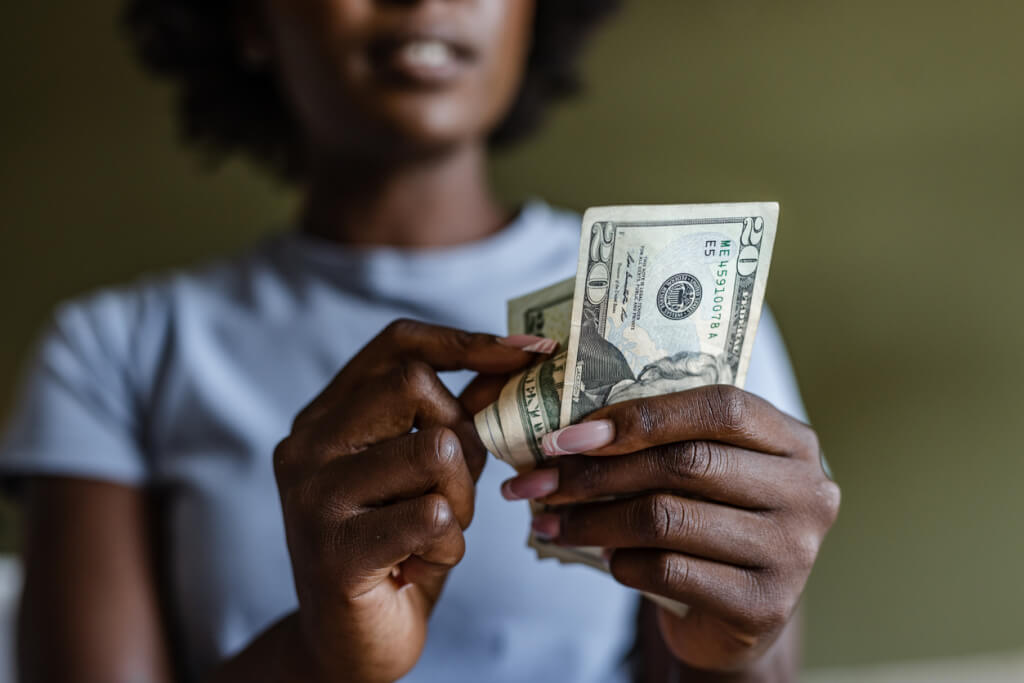What epidemics did New York survive and how did it affect the look of the city
'20.03.2020'
Source: ny.curbed.com
New York has experienced many troubles - from yellow fever and cholera to polio and Spanish flu. Each of these epidemics has changed the face of the city. Now the townspeople are trying to protect themselves from the coronavirus, which is also likely to leave a noticeable mark in the history of the metropolis. The publication shared the details Curbed.
prehistory
In September 1668, Samuel Megapolensis, a pastor of a Dutch church in the newly created city of New York, wrote to a friend about how the Lord "visited us with dysentery, which even now is increasing in virulence." What Megapolensis described was probably the first outbreak of yellow fever in the city that devastated it for more than a century.
The pastor continued: “It seems that God is punishing this earth for its sins. A meteor appeared in the air a few years ago. Last year, we saw a terrible comet in the west, just above the horizon. She could be observed for about eight days, and then she disappeared. We are afraid of God's punishment, but we allow his favor. ”
More than 350 years have passed since then. Today, New York is at the epicenter of another epidemic, and the number of confirmed cases of COVID-19 is growing every day. It is instructive to recall what previous generations managed to survive: from yellow fever and cholera to polio and Spanish flu. A review of past epidemics not only gives an idea of the resilience of the city, but also indicates how a pandemic can once again change the face of New York.
Yellow fever
Yellow fever was so devastating in early New York because no one was naturally immune to it back then, as it is today to coronavirus. This disease was in stark contrast to smallpox, a virulent disease most prominent in the XNUMXth and XNUMXth centuries; while the disease devastated American Indian communities, many colonists acquired immunity to the disease while still living in Europe, where outbreaks of smallpox were almost common.
Accurate statistics on early yellow fever outbreaks are difficult to find. But in 1702, Lord Cornbury, the colonial governor of New York, wrote that "in ten weeks, the disease claimed up to five hundred people of all ages and genders." The population of New York at that time was about 5000; 10% of the city died in less than three months.
Initially, mosquitoes were believed to be the main carriers. However, in the XVII and XVIII centuries new versions appeared - from poor sanitary conditions to an increase in the level of immigration. The latest version was so widespread that yellow fever was called the "disease of strangers."
To combat the disease in the 1730s, New York began to regulate livestock in the city, and slaughterhouses moved to the area near the Collect pond. This pond covered the territory where the courthouses are now located on Foley Square.
Such measures did not stop the spread of the disease. However, something has changed in the life of the city.
Impact: Department of Health and Clean Water
In 1793, New York was forced to create the city’s first Department of Health. The created body adopted a number of strict quarantine laws, created a commission to manage the health sector and authorized the General Council to accept sanitary orders and appoint a sanitary inspector.
While the health commission had little authority other than to respond to outbreaks, in other parts of the city, doctors and reformers were considering how to deal with public health problems. One of the quarantine sites, an out-of-town farm called Belle Vue, was purchased in 1798 by a city hospital in the city center. Bellevue Hospital soon became a key isolation site.
On the subject: Over 4000 New Yorkers get coronavirus, 29 die
In 1799, the Manhattan Company was formed in lower Manhattan to provide clean water for the population. He founded the company Aaron Burr. The organization laid several wooden pipes in lower Manhattan, and for the first time several New Yorkers received running water.
However, the source from which the water was supplied was located near the Kollekt pond. The water in this pond was basically not clean. Therefore, in 1803, it was decided to empty it and fill it with clean water. The canal, which was laid to the Hudson River, was dug by unemployed New Yorkers working for pennies. In the 1820s, the canal was filled with water. Now it's called Canal Street.
Cholera
In the 1830s, during the decade when the city’s population grew from 200 to more than 000, New York was hit by new natural disasters. In June 310, an outbreak of cholera claimed the lives of 000 people in two months, especially in the growing area of Five Points. Since no one else knew that the disease spreads mainly through contaminated water, the city continued to ignore the problems of water scarcity.
The situation changed when a fire broke out in Hanover Square in December 1835, destroying almost everything that was left of the Dutch and British colonial city.
The Burra company, as it turned out, did not lay enough pipes. Houses that were being built in promising areas such as Greenwich Village still had outbuildings and water tanks.
Consequence: Croton Aqueduct
After a fire in the city, the Croton Aqueduct was created, which opened in October 1842. The system was built "according to ancient Roman principles, with water descending by gravity from the dam of the Croton River, 64 kilometers north of the city in Westchester County." This made it possible for New York not only to deal effectively with fires, but also to lay water pipes during the construction of new buildings.
Just as middle-class Greenwich Village residents were in a hurry to get out of lower Manhattan, the promise of running water pushed homeowners north into newly built neighborhoods such as Gramersy Park and Chelsea. Thus, wealthy New Yorkers were given the opportunity to live in cleaner homes.
But for the growing working class of the city, mainly immigrants from Germany and Ireland, living conditions were getting worse. The construction of the city’s first residential building in the mid-1820s made Five Points an even more densely populated area. By the time hostilities began in July 1863, more than 800 people lived in the city, almost a quarter of whom were Irish, most of them living in Five Points.
After the end of the Civil War, reformers led the movement to improve the health and well-being of urban immigrants. The first of these was the introduction of the Housing Regulation Act in New York and Brooklyn. In 1879, the law was tightened, requiring the installation of ventilation shafts between buildings.
A big step in the fight against disease was the addition of outbuildings connected to urban sewers. At that time, the theory that diseases caused miasms was overtaken by another idea, which claimed that all problems provoke specific microorganisms inside the human body.
Since the 1850s, New York has directed forces to create Central Park and other city parks. The goal was to improve the health of New Yorkers - both physical and moral. Indeed, for many in the XNUMXth century, poor health was often associated with poor morality; Co-architect of the Central Park Frederick Law Olmsted believed that the park has a "harmonizing effect on the most miserable and lawless classes of the city."
Polio
On June 8, 1916, four cases of polio were reported in the Italian community in Govanus (Brooklyn). This viral disease began to appear regularly in the United States at the end of the 1907th century. The first major outbreak in New York occurred in the summer of 2500, when about XNUMX cases were reported.
By June 17, the Department of Health announced an epidemic. People who became ill with polio had two options: to isolate themselves or go to the hospital. Since many people did not have the necessary living conditions for self-quarantine, such as a separate room for the patient, the children were taken from their parents, and many of them died in quarantine hospitals. Ultimately, the disease affected more than 23 people in the north-east of the country, of which about 000 died.
Flu
The outbreak of poliomyelitis was just the beginning of all the troubles for New Yorkers. Two years later, in 1918, the flu came from Europe. He claimed the lives of 50 to 100 million people around the world, and together with 18 million who died in the First World War, destroyed an entire generation.
As with polio, New York could use a preexisting healthcare infrastructure. The Department of Health urged people in the streets to cover their mouths with a handkerchief while coughing. Clinics have been set up in various public buildings to treat people with the flu.
In the end, New York achieved one of the best results in the United States: in the years 1918-1919, about 30 New Yorkers died from the flu, but the number of deaths was about 000 people per thousand people. For comparison: in Philadelphia, nearly 3,9 out of 8 cases were fatal.
Some attribute the success of the city to new practice, according to which business hours have been changed to prevent traffic jams in the city and to keep citizens at a great distance from each other (this was reminiscent of today's “social distance”).
Consequence: improved housing conditions
In the 1920s, memories of these epidemics helped shape the city's housing policy. The Lower East Side is home to more than a third of the population of Manhattan, many people live in crowded, substandard homes. Many reformers believed that improving housing conditions would be a necessary first step in preventing another outbreak.
So there were new subsidized apartments, such as the Rockefeller-funded The Dunbar in Harlem and Amalgamated Dwellings in the Bronx. The Dunbar had private courtyard entrances and "well-furnished apartments with modern kitchens and bathrooms" as well as "kindergarten, lounges, playgrounds and private security."
These private buildings were followed by the first NYCHA buildings, aptly named First Houses. They offered the residents "sunlight, space and air." It was noted that these are “the minimum housing requirements that every American is entitled to.”
In the next three eras, the so-called the tower-in-a-park design, which is often attributed to Ville Radieuse by architect Le Corbusier, was especially popular. Le Corbusier, like many of his contemporary contemporaries, was influenced by the 1918 flu outbreak, so he shared the idea that “urban planning and building houses” should “contribute to good health and healthy morale.”
The Queensbridge Houses, opened in 1938, were part of the first wave of public housing in New York. But the city knew that sun and air alone were not enough. In the buildings of the New York City Housing Authority, rent was to be paid weekly. During the epidemics, housing assistants were hired to collect rents and weekly social security checks. Gradually, the city began to establish regular contacts between tenants and a social worker.
Today in New York, a large number of public housing, the inhabitants of which are forced to put up with parasites, mold and broken elevators. It is difficult to consider such housing as an achievement in the field of public health. However, for those who moved from crowded residential buildings, these projects were a welcome option.
Pandemic COVID-19
For almost four hundred years, New York has been responding to disease outbreaks through the construction of new hospitals, the establishment of quarantine stations and safe areas. However, the authorities begin to think about the most vulnerable segments of the population after epidemics.
Today, one in five New Yorkers enjoy government housing. While New York is facing the COVID-19 pandemic, the question arises: how are the most vulnerable tenants of this property serviced? If the townspeople are asked to stay home so that the metropolis can overcome the outbreak of coronavirus, will the city cope?







